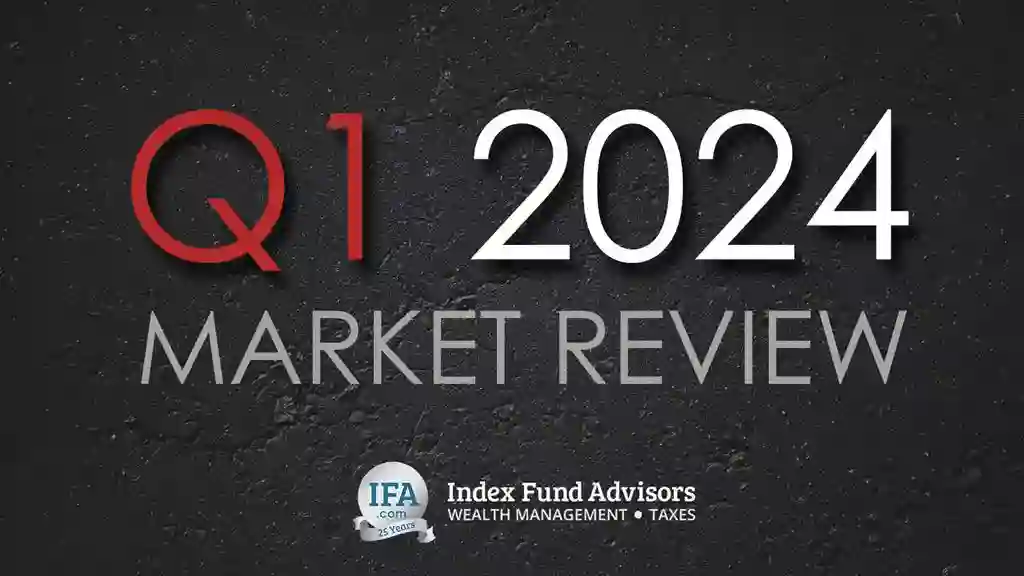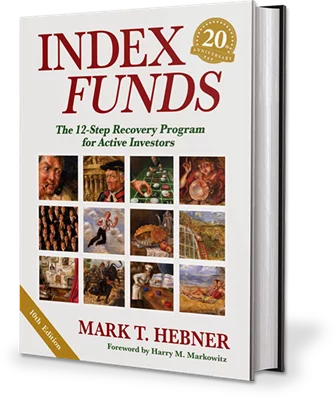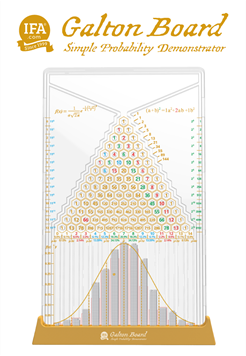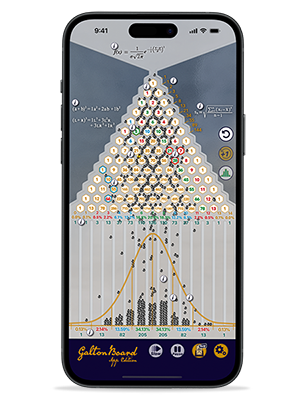Following a strong end to 2023, bullish investment sentiment continued to sweep through global financial markets in the first quarter of a new year. All seven major domestic equity IFA indexes produced healthy Q1 gains, led by large-cap value stocks with an 11.28% return.
Sister equity indexes covering international developed and emerging markets also generated positive results in the initial three months of 2024, although at a slower pace than those in the U.S. (For a more thorough breakdown, see IFA Founder and CEO Mark Hebner's video below.)
Aside from short-term market gyrations from quarter-to-quarter, it's important for investors focused on sticking to a strategic financial plan — one that is tailored to each IFA client's unique financial situation and offered on a complimentary basis — to be aware of how returns are being reported.
Although IFA Indexes and IFA Index Portfolios are presented as total returns, we've found in too many instances that investment gains and losses are frequently reported in the media as price returns. Even major index providers such as S&P Global and FTSE/Russell set price returns as the default measure on key data-generating sites, according to our own research.
The distinction for investors, of course, is that price returns don't include dividends and other distributions. How big of a difference does that make? As shown in a table we've created to illustrate recent gaps in returns reporting, the S&P 500 index had an annualized return during the period of 25 years and one day (ended March 5) of 5.78%. During this same timeframe, the bellwether U.S. index posted an annualized total return of 7.77%.
Hebner is leading a petition drive to get industry leaders and major media players to stop reporting price returns as a defacto standard. As Rodney Comegys, Vanguard's head of its global equity index group told him:
"Price return calculations for indexes are largely a holdover from the early days of indexes. Before computers became ubiquitous, price returns were much simpler to calculate, and so became the default methodology for presenting index returns. Despite many decades of advancements in computing and the advantages of evaluating total returns, price return calculations are still commonly quoted. Vanguard believes that total returns present a more comprehensive assessment of the investor experience and should be the go-to method for presenting and discussing returns in the capital markets."
Hebner has developed a dedicated site for his petition drive, and he encourages all investors to add their signatures. (Names are being taken on a completely confidential basis.) You can find it and links to associated independent research on this issue — as well as comments provided to him from industry leaders — by clicking here.
"The impact of this omission is significant — dividends would have increased reported price-only index returns by an estimated annualized return of between two- and three-percent per year, or approximately twice the cumulative return, over the last quarter-century," Hebner wrote on the petition's home page.
Of note: The petition site also includes academic research looking into blatantly dour media reports based on price returns over extended periods. These are based, according to such research, on exaggerated dips due to use of price instead of total returns. Even on a daily basis, the findings note that reporting "partial" returns — as Hebner refers to such numbers — can greatly skew results. Researchers found that calculating past daily returns on a total returns basis would've turned several reported "negative" days in the media into positive ones. Oops!
"This initiative on total returns reporting by Mark Hebner of IFA is a very significant one and will alter the landscape of the asset management industry, when the financial media begins to see the abundance of academic research on the topic," noted Pankaj Agrrawal, a finance professor at the University of Maine.
Domestic Equities
Like in the previous quarter, domestic stocks kept gaining ground in Q1 of 2024. Unlike last year's fourth quarter, however, the opening three months of a new year produced oversized returns in large-cap stocks. And such outperformance came across IFA indexes tracking value, growth and a blend of both styles. While IFA's large value equity index did best in Q1, all three benchmarks — value, blend and growth — wound up with double-digit percentage returns. By contrast, small-cap stocks generated single-digit percentage returns, led by the IFA U.S. Small Growth index's 7.99% gain. Still, the sister IFA U.S. Small Cap Value Index managed to return nearly 3.7%.
International Equities
In Q1, the large-cap focused IFA International Value Index topped returns of sister small-cap indexes representing developed foreign stock markets. The next best index, however, turned out to be the IFA International Small Cap Value Index. It finished ahead by more than 5% in the quarter. The blended IFA index tracking international developed small-cap equity markets also finished on solid ground in Q1 by returning nearly 3.5%. Worth noting, too: The quarter's leader among IFA's international developed stock indexes — the one focused on large-cap value — represented the only part of those markets that outgained the previous quarter's returns (6.92% vs. 6.14%).
Emerging Markets Equities
Stocks issued by companies based in developing countries continued to show positive results in Q1. In particular, IFA's value-oriented index of large-cap companies outperformed its sister emerging markets benchmarks. Meanwhile, all of these IFA emerging markets indexes finished the opening three months of 2024 with gains, though notably lower than the previous quarter's mid- to-high digit returns.
Real Estate Equities
In a quarter that saw most other asset classes produce positive results, real estate markets around the world generally finished Q1 in negative territory. In the U.S., REITs slid on average by -0.39%, according to a survey of major global indexes by Dimensional Fund Advisors. That was less than real estate stocks in global ex-U.S. markets, which is significant since domestic REITs (real estate investment trusts) represented an estimated 69% of total global assets invested in real estate markets at the end of Q1 2024. Together, the IFA Global REIT Index returned -1.54% in the quarter.
Fixed-Income
In the first quarter of 2024, the 30-year U.S. Treasury rate increased by 0.26 of a percenate point to yield 4.34%. At the same time, the 10-year U.S. Treasury rate rose by 0.25 of a percentage point to 4.20%. Also, the five-year U.S. Treasury rate increased by 0.28 of a percentage point to 4.21%. If interest rates have increased, the price of existing bonds can generally be expected to decrease, and vice versa.
For Q1, IFA's fixed-income benchmarks produced returns topping 1%, which can be considered as robust in rather staid global bond markets. Two of the indexes generated 1.34% gains. The IFA One-Year Fixed Income Index finished slightly higher with a return of 1.44%. At the same time, the IFA Five-Year Global Fixed Income Index wound up gaining 1.41% in the quarter.
IFA Index Portfolios
The first quarter illustrated an ongoing theme we've seen over longer periods — namely the value of investing in a globally diversified portfolio of stocks and bonds. As a result, we like to encourage novices as well as experienced investors to engage in an ongoing conversation with an IFA wealth advisor regarding each person's risk capacity. Besides offering an online Risk Capacity Survey, we provide to each client a complimentary and holistic financial plan.
Below is an overview of how several IFA Index Portfolios performed in Q1 as well as during the previous quarter. All of these returns are shown net of the maximum annual 0.90% advisory fee through March 31, 2024.
Each quarter, we monitor our recommended funds for clients. As part of that process, we've developed a rating system. For a summary of those results, please feel free to check IFA's latest Performance Monitoring Report (PMR).
The wealth of IFA's educational materials are available for Apple iOS and Android devices via the IFA App. This free App is available to download from both the Apple App Store and the Google Play Store for Android.
Performance results for actual clients that invested in accordance with the IFA Index Portfolio Models will vary from the backtested performance due to the use of funds for implementation that differ from those in the index data, market conditions, investments cash flows, mutual fund allocations, changing index allocations over time, frequency and precision of rebalancing, not following IFA's advice, retention of previously held securities, tax loss harvesting and glide path strategies, cash balances, lower advisory fees, varying custodian fees, and/or the timing of fee deductions.
This is not to be construed as an offer, solicitation, recommendation, or endorsement of any particular security, product or service. There is no guarantee investment strategies will be successful. Investing involves risks, including possible loss of principal. Performance may contain both live and back-tested data. Data is provided for illustrative purposes only, it does not represent actual performance of any client portfolio or account and it should not be interpreted as an indication of such performance. IFA Index Portfolios are recommended based on time horizon and risk tolerance. Take the IFA Risk Capacity Survey (www.ifa.com/survey) to determine which portfolio captures the right mix of stock and bond funds best suited to you. For more information about Index Fund Advisors, Inc, please review our brochure at https://www.adviserinfo.sec.gov/ or visit www.ifa.com.














